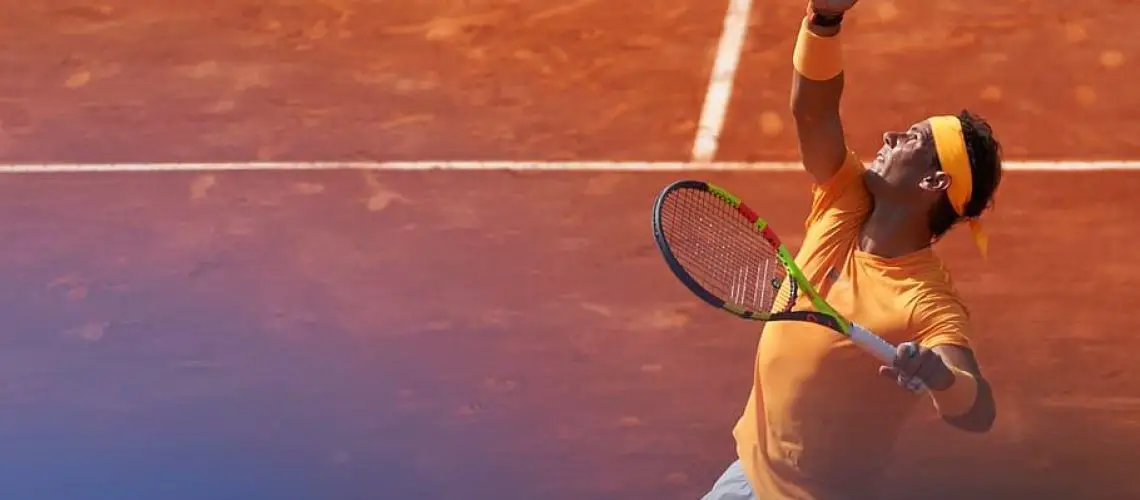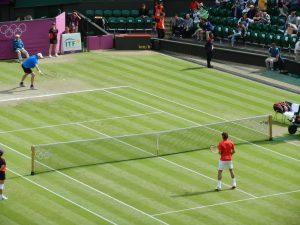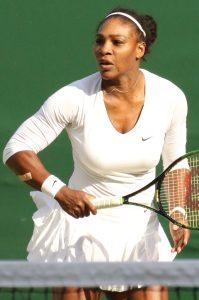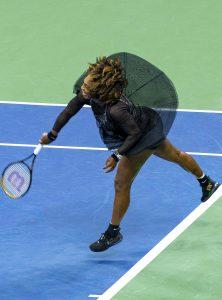We may earn money or products from the companies mentioned in this post.
Introduction

Tennis, a highly popular sport worldwide, is played on various court surfaces that greatly impact the game Over the years, different types of tennis courts have emerged, each with its own unique characteristics and challenges Understanding the history of these court surfaces provides valuable insights into how the game has evolved and adapted to different playing conditions
Brief History of Tennis Court Surfaces
1 Grass Courts:
Grass courts hold a special place in tennis history as they were the original surface on which the sport was played The lush green grass provides a fast and low-bouncing surface, demanding quick reflexes and agility from players Wimbledon, one of the most prestigious tennis tournaments, is known for its iconic grass courts
2 Clay Courts:
Clay courts offer a slower pace compared to grass courts due to their soft and granular composition This unique surface allows players more time to set up shots and engage in longer rallies The French Open is famous for its red clay courts, which provide a distinct challenge that tests endurance and sliding skills
3 Hard Courts:
Hard courts are made of asphalt or concrete covered with an acrylic layer or synthetic material They offer a medium pace that strikes a balance between the speed of grass courts and the slowness of clay courts Hard court surfaces are commonly used in major tournaments such as the US Open and Australian Open
Transition to Blue Tennis Courts
1 The Australian Open’s Switch to Blue in 2008:
In 2008, the Australian Open made headlines by becoming the first Grand Slam tournament to introduce blue tennis courts instead of traditional green or red surfaces This change sparked curiosity among players and spectators alike
2 The Reasons Behind the Change:
The decision to switch to blue courts was not merely an aesthetic choice but one driven by practical considerations The use of blue courts enhances visibility for both players and viewers, making it easier to track the ball’s trajectory during fast-paced rallies Additionally, the contrast between the yellow tennis ball and the blue court increases visual clarity, improving overall gameplay
Moreover, blue courts have been found to absorb less heat compared to traditional green or red surfaces, reducing player fatigue in hot weather conditions This change in court color has also added a modern and vibrant touch to the Australian Open, enhancing its appeal and branding as a unique tournament
In conclusion, understanding the history of tennis court surfaces provides valuable insights into how different playing conditions can impact gameplay From grass courts that demand speed and precision to clay courts that test endurance and strategy, each surface offers its own challenges The transition to blue tennis courts at the Australian Open showcases how practical considerations and visual enhancements can shape the evolution of the sport while maintaining its rich traditions
Improved Visibility for Players and Spectators

One of the key benefits of blue tennis courts is the improved visibility they offer to both players and spectators When it comes to tracking the ball during a fast-paced game, contrast is crucial The vibrant yellow tennis ball stands out much more prominently against a blue court surface compared to a green one
Think about it: a yellow ball on a green court can easily blend in, making it harder for players to spot and react quickly However, on a blue court, the contrast between the bright yellow ball and the deep blue surface enhances visual acuity and reaction time This means players can better anticipate their opponent’s shots and make split-second decisions with greater accuracy
Not only does this benefit players directly, but it also enhances the spectator experience When watching tennis matches on television broadcasts or from stadium seats, being able to clearly see every movement of the ball adds excitement and engagement With optimal camera angles and color saturation on blue courts, viewers at home can feel like they’re right there in the action The enhanced visibility creates an immersive experience that keeps fans hooked throughout the match
Environmental Considerations

In addition to improving visibility, blue tennis courts also have environmental advantages that shouldn’t be overlooked One significant benefit is their reduced heat absorption compared to other colors commonly used for court surfaces
When playing under scorching sun conditions, traditional black or green courts tend to absorb more heat from sunlight, resulting in higher temperatures on the court surface This not only affects player performance but also compromises their comfort levels during intense matches
In contrast, blue courts reflect more sunlight due to their lighter color tone, which helps reduce heat absorption significantly By minimizing heat retention on the court surface, players can enjoy cooler playing conditions even under blazing sun rays This not only enhances their comfort but also contributes to better performance
Additionally, for indoor tennis facilities, the reduced heat absorption of blue courts can lead to lower energy costs for cooling By choosing blue surfaces, facility owners can potentially save on air conditioning expenses, making it more sustainable and cost-effective in the long run
Technology and Materials Used in Blue Tennis Courts

When it comes to blue tennis courts, there are various types of surfaces that can be used These include acrylic, synthetic grass, and clay Each surface has its own unique characteristics and offers a different playing experience for tennis players
Plexicushion Prestige (Australian Open)
The Plexicushion Prestige surface is commonly used in the Australian Open This type of court surface is made up of multiple layers, including an acrylic cushioning system that provides comfort and shock absorption for players The construction process involves applying several coats of acrylic resins to a concrete base, resulting in a durable and resilient playing surface
In terms of performance characteristics, the Plexicushion Prestige surface offers medium speed and consistent bounce It allows players to generate good spin on their shots while still maintaining control over the ball The surface also provides excellent traction, which helps prevent slipping during intense rallies
Laykold Masters Color System (US Open)
The Laykold Masters Color system is the chosen court surface for the US Open This type of court is constructed using multiple layers of acrylic resins mixed with color pigments to create vibrant blue hues The construction process involves applying these layers onto an asphalt or concrete base
When it comes to performance characteristics, the Laykold Masters Color system offers a fast playing surface with a high ball bounce It allows players to hit powerful shots and play aggressive tennis The surface also provides good foot stability and grip, allowing players to move quickly around the court
Surface Maintenance Requirements

To keep blue tennis courts in optimal condition, regular care practices are necessary These practices include routine cleaning by sweeping or pressure washing to remove dirt and debris Additionally, keeping the court free from leaves and other organic matter will prevent staining and potential damage to the surface
Long-term resurfacing is also an essential aspect of maintaining blue tennis courts Over time, the court surface may wear out or become damaged due to heavy usage or harsh weather conditions Resurfacing involves applying a new layer of acrylic coating to restore the smoothness and performance of the court
By implementing these maintenance practices, blue tennis courts can remain in top shape for players to enjoy their game and experience optimal playing conditions
Conclusion

After exploring the advantages of blue tennis courts, it is clear that this color choice has a significant impact on the game Not only does it provide visual benefits for players, spectators, and TV viewers, but it also contributes to reducing the environmental impact of tennis facilities
Visual benefits:
Blue tennis courts offer a unique and visually appealing experience for players and spectators alike The vibrant blue color enhances the visibility of the ball against the court surface, making it easier for players to track its movement This can lead to improved gameplay and more exciting matches for fans
Environmental impact reduction:
Blue tennis courts have another advantage—they help reduce the environmental impact of traditional green or red clay courts By using blue instead of green, less water and maintenance are required to keep the court in top condition Additionally, blue surfaces absorb less heat from sunlight compared to darker colors, resulting in lower energy consumption for cooling systems
The Future of Tennis Court Colors

Innovation knows no bounds when it comes to tennis court design, and future possibilities for court colors are endless As technology advances and sustainability becomes increasingly important, we may see more environmentally-friendly options emerge
1 Sustainable materials:
The use of sustainable materials such as recycled rubber or eco-friendly paints could become more prevalent in tennis court construction These materials not only reduce environmental impact but also enhance player performance by providing better traction and shock absorption
2 Customizable designs:
Tennis court colors may become customizable based on individual preferences or specific tournament themes This could add an extra level of excitement by allowing players and organizers to create unique atmospheres that reflect their personalities or the event’s branding
3 Interactive surfaces:
Imagine playing on a court that changes color based on the score, or one that interacts with player movements With advancements in technology, interactive surfaces could become a reality, making tennis matches even more engaging and immersive for players and spectators
The future of tennis court colors holds great potential for both players and fans As we continue to push boundaries and embrace new ideas, the game of tennis will undoubtedly evolve, creating unforgettable experiences on and off the court
Useful Links

Why Tennis Courts Are Blue – Everything You … – TennisTalky
Different Color Shades For Tennis Court
Hardcourt
Tennis Court Color Options
Find a Tennis Court in Blue Springs, MO
What Are Tennis Courts Made Of? (The 11 Surfaces)
Types of Tennis Court | Tennis Court Surfaces
U.S.T.A.’s Dabble in Blue Becomes a Tidal Wave
Play Pickleball at Tennis Courts, Blue Mountain Lake
Public Tennis Courts Near Blue Hill, ME – Maine
City, BEA volley over tennis courts | News, Sports, Jobs
Blue Grey Basketball Court – All Signs
Hard Court Color … do you have a preference?
Resort’s Blue Tennis Courts | Stock image
Why are Laver Cup Courts Painted in Black?
Tennis Court Surface Color Samples
Blue Haven Tennis Courts
Parks & Recreation Serves Up New Tennis Courts at …






